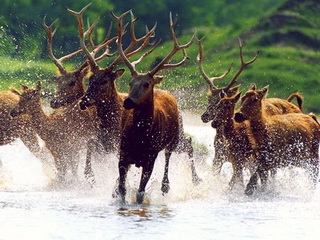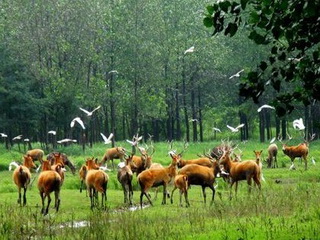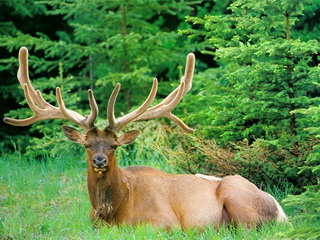search for a Trip

Yancheng Dafeng Milu National Nature Reserve is specifically designed to conserve and naturalize an endangered deer species, Pere David's Deer or Milu in Chinese.
The deer reserve park is a part of the Yancheng National Nature Reserve, which is a conservation area for endangered bird species, including the red crowned crane, insects, fish and animal species.
The nature reserve has earned its international reputation and is founded by the local municipal government, the State Environmental protection Agency, and the United Nations Development Program Global Environment Fund.
Appendix for Pere David's Deer or Milu
Weighing between 150 and 200 kg, Pere David’s Deer (Elaphurus davidianus, Milu in Chinese), is a species of deer known only in captivity. It prefers marshland, and is believed to be native to the subtropics. It grazes on a mixture of grass and water plants.
The deer species has a nine-month gestation period, and one or two fawns are born at a time. They reach maturity at about 14 months, and have been known to reach the age of 23 years. Père David’s Deer has a long tail, wide hooves, and branched antlers. Adults have summer coats that are bright red with a dark dorsal stripe, and dark gray winter coats. The fawns are spotted.
Besides the Chinese official name Milu, a Chinese nickname "sibuxiang", translated as “four unlikes”, was given to this deer species, because the animal has been described as having “the hoofs of a cow but not a cow, the head of a horse but not a horse, the antlers of a deer but not a deer, the body of a donkey but not a donkey.” Several other sources claim to have different representations, for example: “the nose of a cow but not a cow, the antlers of a deer but not a deer, the body of a donkey but not a donkey, the tail of a horse but not a horse.”


The Pere David’s deer’s original habitat is thought to have been the swampy, reed-covered marshlands. Unlike most deer, the Pere David's deer likes water and swims well. The deer was originally seen in northeastern and east-central China, but it apparently became extinct in the wild at least 1000 years ago.
Hunting is thought to have been the main cause for the original decline of this wild deer. It survived in parks, and in the 1800’s a French missionary and naturalist, Father (“Pere” in French) David, observed the animals in the last remaining Chinese herd and subsequent efforts resulted in a number of these animals being sent to Europe. The remaining Milu population in China ultimately perished in the early 1900's, mostly due to floods and the unrest during the Boxer Rebellion.
In the late 1980s, a number of deer were returned to China and re-introduced to the wild in China's Dafeng Milu National Nature Reserve. They have successfully reproduced.
Related Tours:
China Attractions Guide
- Anhui Attractions
- Beijing Attractions
- Chongqing Attractions
- Fujian Attractions
- Gansu Attractions
- Guangdong Attractions
- Guangxi Attractions
- Guizhou Attractions
- Hainan Attractions
- Henan Attractions
- Hongkong Attractions
- Hubei Attractions
- Hunan Attractions
- Inner Mongolia Attractions
- Jiangsu Attractions
- Jiangxi Attractions
- Manchuria Attractions
- Ningxia Attractions
- Qinghai Attractions
- Shaanxi Attractions


